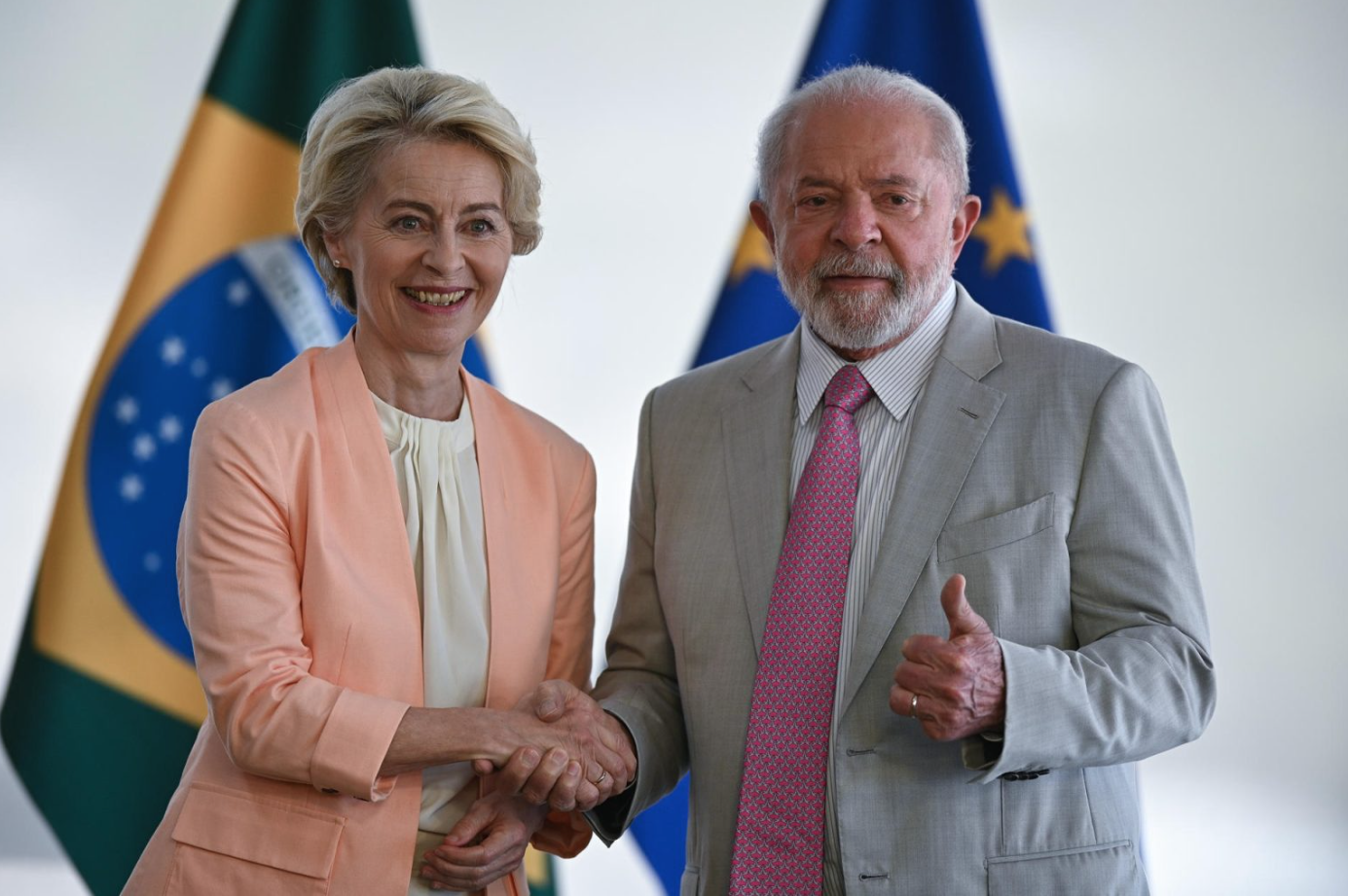At the upcoming summit with Latin America and the Caribbean, the European Union (EU) will launch Route 2023 as a response to China’s Belt and Road and the infrastructure plan, 3BWorld, proposed by the U.S. to the region. But Brussels can hardly compete with the “routes” devised by China and the U.S. for Latin America, having lost presence since the first bi-regional summit in 1999, when the EU was the second-largest trading partner and its main investor and cooperating partner.
According to the Economic Commission for Latin America and the Caribbean (ECLAC), only 9.8% of Latin American exports are destined for the EU in 2020-2021, which implies a sharp drop from the historic second position, falling to fifth behind the U.S. (42.5%), China (15.4%), Latin America (14.5%) and other Asian countries (10.4%). The same fifth place is occupied by the EU as a source region for Latin American imports.
Although the stock of foreign capital in Latin America comes mainly from Europe, China is increasing its investments in the region and the EU is decreasing them. This is due to the fact that since most Latin American countries belong to the group of upper-middle-income countries, the EU has reduced its contributions to development compared to regions such as Africa or Asia.
The scarce material presence of the EU in Latin America and the Caribbean contrasts with its ideational weight. The great advantage of the EU vis-à-vis China and the United States has been, until now, the community of values that it sought to create, from a horizontal and interregional perspective, with Latin America and the Caribbean.
However, the convergence of values is also at risk since both regions have been immersed in a new geopolitical game that demands greater realism in their external projections and is detrimental to liberal principles such as democracy, development, or peace that inspired a European-Latin American strategic partnership, which was created in 1999 in Rio de Janeiro.
Since the beginning of the dialogue in the 1980s, Latin America and the EU have shared a dependence on the U.S. and a quest for greater autonomy in foreign policy. Both regions are fragmented actors with limited decision-making capacity and international influence. Despite major advances, the EU only acts with a single voice in the trade arena, and Latin America rarely presents itself as united or adopts common positions on the global stage.
Despite this, regionalism has been successful as a formula for seeking a more independent international position (from the U.S.). This has become more complex after Russia’s invasion of Ukraine, forcing the region to position itself alongside the U.S. and the North Atlantic Treaty Organization (NATO) or, on the contrary, alongside the BRICS and, with it, China and Russia. This international polarization forces Latin America and the EU to take one side or the other, without seeking a confrontation with China, which is the second-largest trading partner of both regions. This delicate balance has altered the European-Latin American agenda: on the one hand, it caused a mutual estrangement and, on the other, less commitment to building a community of values.
If this project was under construction, since the war in Ukraine it has begun to disintegrate due to fundamental differences. Although only four countries (Bolivia, Cuba, El Salvador and Nicaragua) abstained in the United Nations vote to condemn Russia’s invasion, interpretations are divergent. Brazil and Mexico rejected sanctions against Russia and military support for Ukraine.
The obvious reasons: the U.S. military interventions and interference in internal affairs created an almost unanimous aversion against these unilateral actions not enshrined by the Security Council. Another reason is the creation of the peace zone in Latin America. A third reason would be geographical remoteness, and the fourth is the growing cooperation with China, which claims neutrality and presented a peace plan that some countries support.
Contrary to the reading that China is only an economic actor in the region, its rise also implied a greater political affinity. South America, led by Brazil, is concentrating its economic relations with China as an effect of the BRICS and of the South-South cooperation promoted by President Luiz Inácio Lula da Silva, among other issues, to obtain a permanent seat on the Security Council.
The ECLAC-China Summit, scheduled for 2024, would affirm the growing political and cultural presence and influence of the Asian country in a region traditionally dependent on the U.S. Since 2006, Confucius institutes have been created in 23 Latin American countries, and President Xi Jinping has made 13 visits to the region. Cuba, Nicaragua, and Venezuela (countries sanctioned by the U.S.) have had China and Russia as their main allies.
Russia maintains close relations with Cuba and Venezuela, but, apart from the group of “rebel” countries, Brazil and even Mexico have shown some affinity with China and maintain relations with Vladimir Putin’s Russia.
The close cooperation between South America and China contrasts with a much more distant vision on the part of the EU, which maintains dialogue and cooperation with China, a country that the President of the European Commission, Ursula von der Leyen, has described as a “systematic rival and economic competitor”, but also as a cooperation partner from which it is not necessary to “disengage”.
This ambiguous relationship contrasts with the open hostility between the EU and Russia, and relations, once described as strategic, which merited two annual summits, are at a zero point, as they have been marked by sanctions and President Putin’s nuclear threat to NATO.
Rebuilding consensus on international issues where there used to be greater convergence would be an important objective of the EU-AL-Caribbean Summit in 2023. The war in Ukraine has forced a more “realistic” reading of EU foreign policy, which was evident in Josep Borrell’s call for the EU to learn the hard power game.
On the Latin American side, the creation of the BRICS and its subsequent development in the last two decades have changed the geopolitical positioning of the region which, due to economic interdependencies, asymmetric with China, and a greater political commitment with Russia, has meant a greater distancing from Europe and the U.S. The community of liberal values continues but has been weakened in the face of new international challenges.
Reactivating the consensus around soft power and liberal values, reinforcing multilateralism, the search for peace between Ukraine and Russia, sustainable development, or the creation of regional blocs, is a necessity to recover the foundations of relations between Latin America and Europe.
The 2023 summit should provide some answers to this challenge. This implies a change of perspective on the part of the EU which, instead of perceiving Latin America as a Spanish affair or a recipient of funds, should realize the weight of 33 countries with which it is possible to build consensuses that are much more difficult to reach than with other regions.
Only a more sincere dialogue that recognizes differences and attempts to build consensus can prevent the decline of the traditional affinity of values that set the Americas apart from other regions such as Africa or Asia.
*Translated from Spanish by Janaína Ruviaro da Silva













